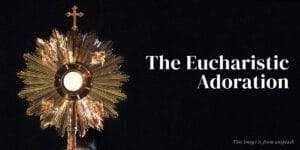What is its significance? First of all, the conception and birth of our Lord are divine. There is no method by the flesh or man. Instead, the Lord descended to this earth and mystically became Man. The integrity of the Blessed Virgin who became the house of Christ when He descended into the womb of the Blessed Virgin cannot have been destroyed. Because He is God, He must live for nine months in a womb that is clean and without blemish of sin. Because of the purity of the Blessed Virgin, she must remain intact. No evil cannot break it. That is what being Aeiphartenos says. She remained a Virgin before, during, and after the birth of the Lord.
So how did that happen? According to Blessed Anne Catherine Emerich’s visions, when it was midnight, and they were already in the manger, there was a bright light. After the light vanished, the baby was in the arms of the Blessed Virgin. Otherwise, the Blessed Mother felt no pain.
In the Church’s teachings to us, it is one of the four Dogmas that your Blessed Virgin has remained a Virgin throughout her life. What are the proofs of this? The prophecies say that there will be a sign, the virgin will conceive and have a child, and He will be called Emmanuel. This statement is what the prophet Isaiah has prophesized. It is only then that it is shown that what is referred to here is the Blessed Virgin because we know that Emmanuel is the Lord.
It was similar during his Resurrection when the Holy Sepulcher was also closed. Then He left the place, but the stone that blocked the entrance there was not damaged. Likewise, when He came to earth, He went out of the womb of the Blessed Virgin while it remained intact.
There are questions here because the Bible says that Jesus also had other brothers. The answer here is that in the Aramaic language, the word brother also refers to cousin or relative. Because Aramaic was the language used during that time, the brothers referred to here were cousins or relatives. So, the Lord is the only child of the Blessed Virgin.
What is the implication of this dogma? This dogma is also related to the Assumption of the Blessed Virgin and in the Immaculate Conception. In relation, God did not allow his mother to be corrupted by sin. He is the source of all goodness. If He chooses a woman to be his mother, she should be immaculate. First, this was proven in the Immaculate Conception. Now in Aeiphartenos, there can be no impurity in her personality and soul. And also, during the Assumption, because she was without sin and just went through the Dormitio.
Another importance of this is that you have the Nature of God in the Person of the Lord Jesus Christ. He is both God and Man. That is why we call the Blessed Mother the Virgin Mary. Another thing it shows us that we should have the purity of the soul so that we can be pleasing when we face the Lord.
Part One – Theotokos
Part Two – Aeiphartenos
Part Three – Immaculate Conception
Part Four – The Assumption





